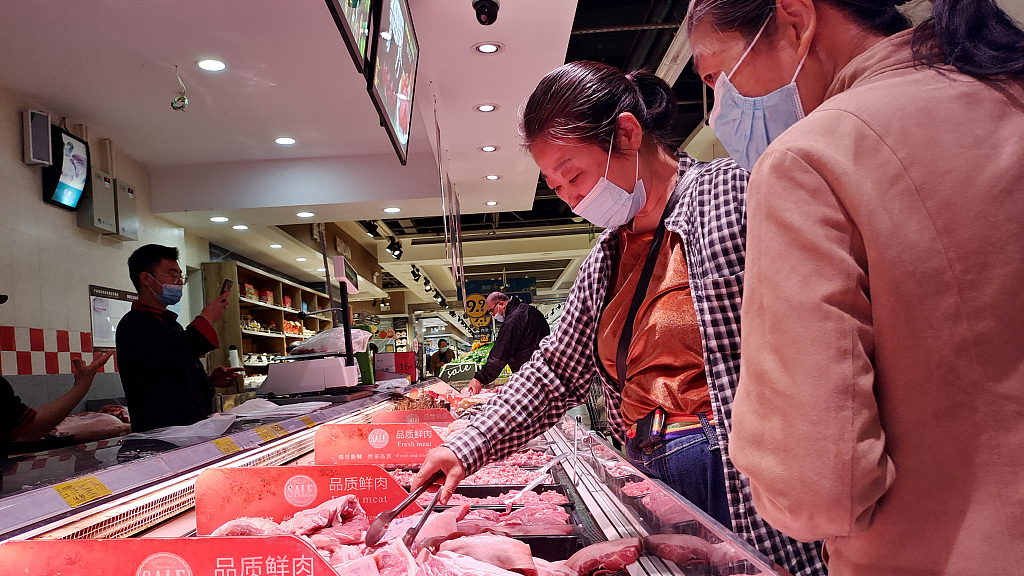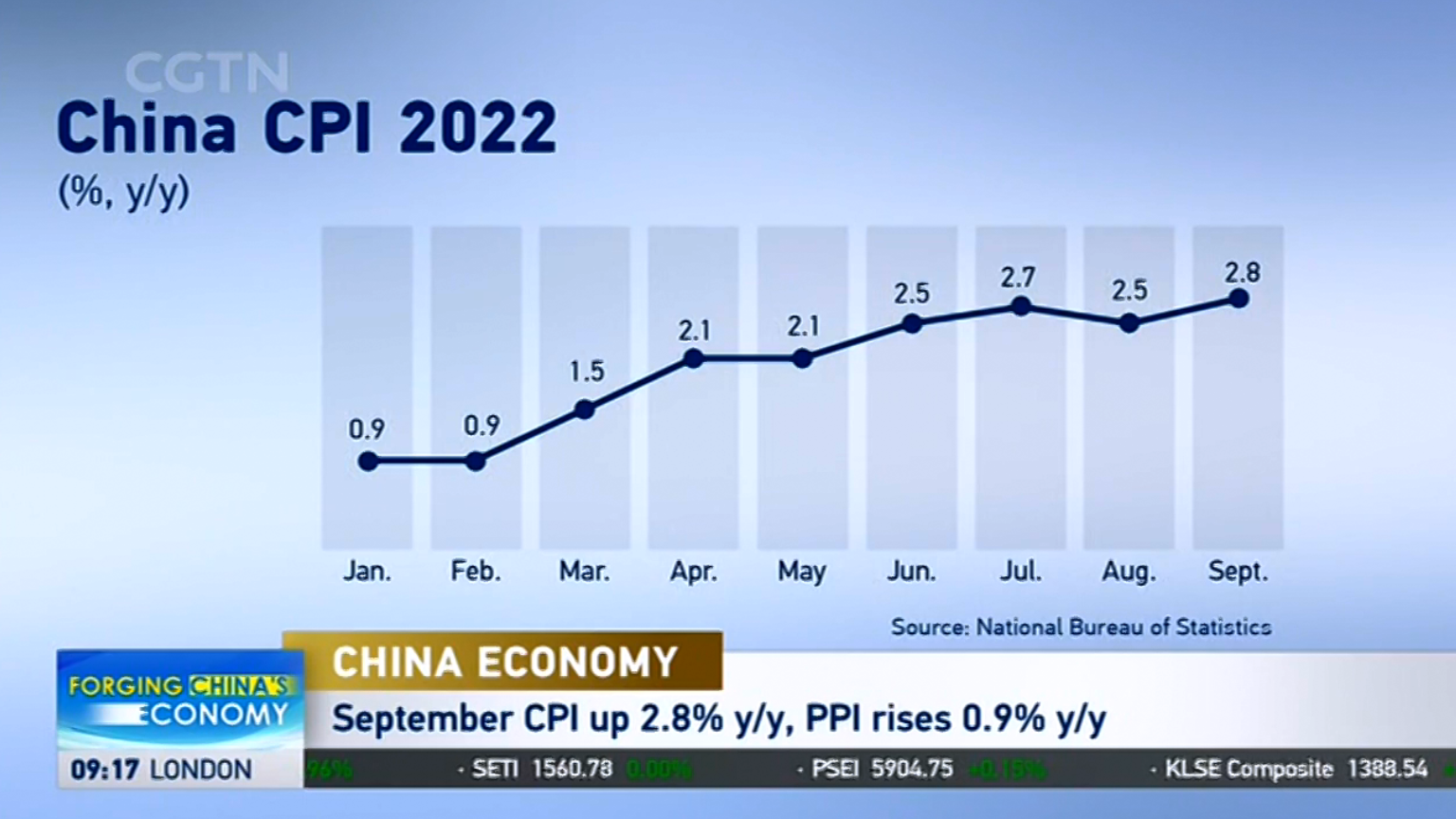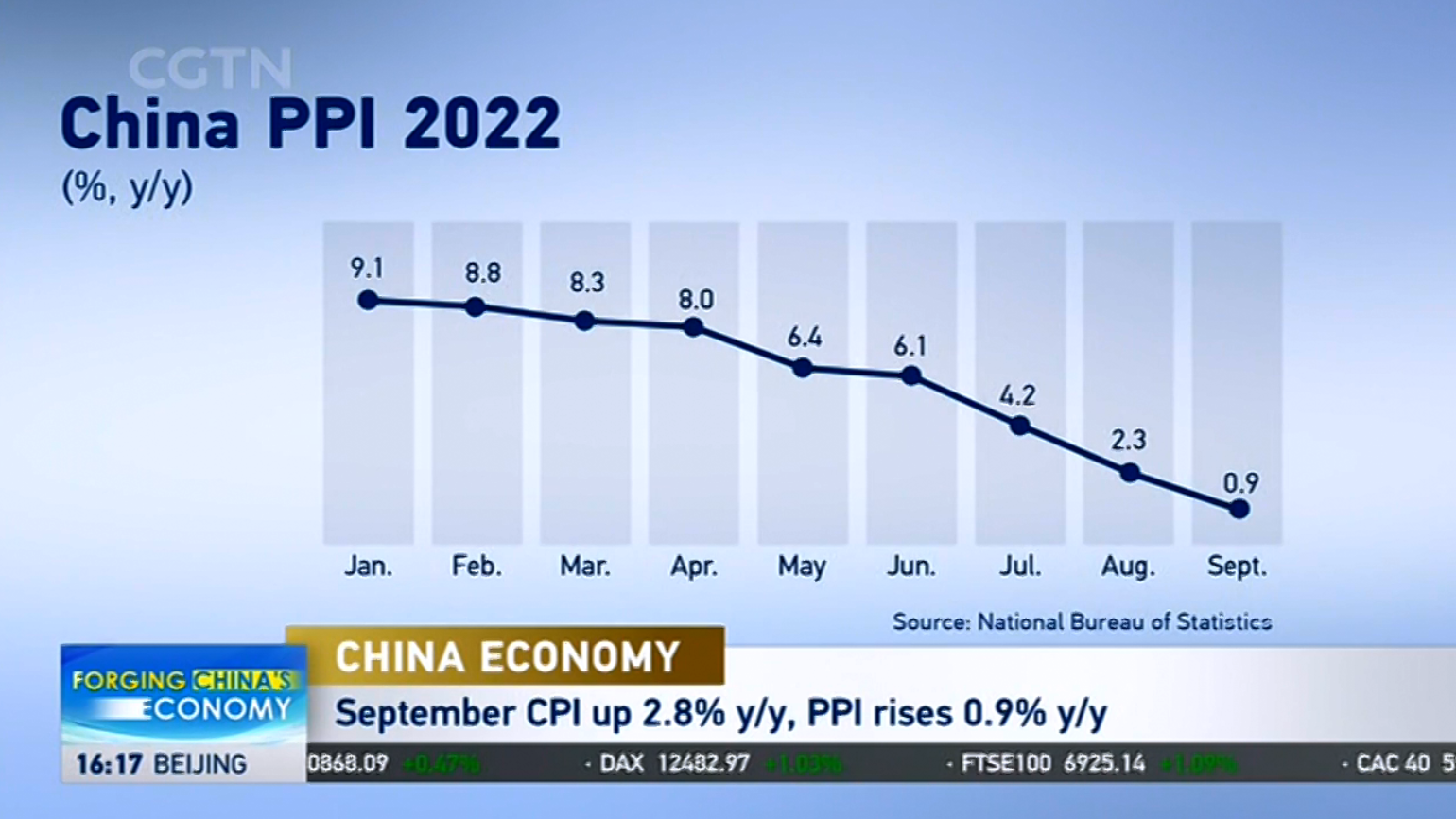
Residents shop at a grocery store in Nantong, Jiangsu Province, China, September 27, 2022. /CFP
Residents shop at a grocery store in Nantong, Jiangsu Province, China, September 27, 2022. /CFP
China's consumer prices grew a bit faster in September amid rising food prices driven by record heat waves, seasonal pork price increases and a spike in holiday grocery demand.
During the month, the consumer price index (CPI), a key gauge of inflation, rose 2.8 percent compared with a year ago, said the National Bureau of Statistics (NBS) on Friday.
The latest consumer inflation data is in line with Reuters' forecast, increasing a 0.3 percentage point from the previous month. On a monthly basis, the CPI was up 0.3 percent, following a 0.1-percent fall in August.

A screenshot from CGTN's Global Business show
A screenshot from CGTN's Global Business show
Food prices jumped 8.8 percent year on year, quickening from a 6.1-percent increase in August, according to the NBS.
Pork prices surged by 36 percent, up 13.6 percentage points over the previous month.
"Pork prices continued to rise as a result of the seasonal recovery in pork consumption demand and farmers' reluctance to sell at lower prices," said Dong Lijuan, a senior NBS statistician.
"However, due to measures such as the release of pork from national reserves, the growth of pork prices slowed in mid-to-late September," Dong said, adding that the monthly pork price increase stood at 5.4 percent.
On September 13, China's top economic planner, the National Development and Reform Commission, announced the release of additional pork into the market from central reserves to "ensure pork supplies and maintain stability in prices," vowing there would be another batch of pork releases later this year if necessary.
The prices of fresh vegetables and fruits rose by 12.1 and 17.8 percent year on year, respectively, per NBS data.
Dong said the jump in vegetable prices was due to high temperatures and less rainfall. The fruit-price increase was caused by rising consumer demands during holidays, she said.
This year's Chinese traditional Mid-Autumn Festival, a three-day national holiday also known as the Moon Festival, fell on September 10, a little earlier than in previous years. Moreover, the seven-day National Day, which lasted from October 1 to October 7, marked the peak of the country's consumption season.
Factory gate inflation continues slowing trend
On a monthly basis, China's producer price index (PPI) dropped 0.1 percent in September, according to the NBS. After a notable contraction of 1.1 percent in August, the country's slowdown of factory gate inflation continued in September.
The continued slowing of producer inflation was due to the price fluctuations of crude oil and other bulk commodities, said Dong. However, she mentioned that the slowdown trend decelerated because demand in some domestic industries had rebounded.
On a yearly basis, the PPI rose 0.9 percent, down 1.4 percentage point from August.
"The sharp divergence between PPI inflation in China and the eurozone (43.3 percent year on year in August) suggests China may be gaining a competitive advantage in manufacturing that could help bolster China's exports," said Lu Ting, chief China economist of Nomura, in a note sent to CGTN.
However, he warned that "the worsening global growth slowdown is denting external demand."

A screenshot from CGTN's Global Business show
A screenshot from CGTN's Global Business show
Among major sectors, prices in the oil and gas extraction industry fell by 3.8 percent from August, extending the downward trend of 7.3 percent. However, on a yearly basis, prices in the sector still soared by 31.1 percent, but were 3.9 percentage points lower than in August, NBS data showed.
Oil prices have been volatile amid the Russia-Ukraine conflict. Earlier this month, OPEC+, the major oil producer group comprising OPEC and allies including Russia, agreed to steep oil production cuts in a move to curb supply.
China's manufacturing activities have continued showing signs of recovery as the purchasing managers' index for the manufacturing sector came in at 50.1 in September, up from 49.4 in August.